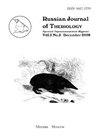跨高加索杂交区家鼠交配行为与亲本Mus musculus的比较研究
IF 0.6
4区 生物学
Q4 ZOOLOGY
引用次数: 0
摘要
不同类型的社会行为的总体功能意义,以及这些行为的不同要素,主要是由个体、性别和物种特征等因素决定的。我们分析了这些因素中的哪一个(或全部)影响了两种密切相关的家鼠——小家鼠和跨高加索杂交带的小鼠——在对偶时的交配行为特征。跨高加索小鼠基因库中的多态性有两种来源:古老的(源于基因库的遗存起源)和进化上的新基因(源于分化类群:家鼠和肌肉鼠的基因流)。我们发现,性是决定性伴侣二元接触中攻击程度的主要因素。研究表明,物种特有的行为模式是决定雄性性行为一些主要定量参数的唯一因素。这包括射精的频率和射精的频率,这是成功交配的决定性因素。正如我们之前所展示的,在家鼠近亲群中的异种雄性和雌性相遇时出现的性行为模式的物种特异性特征,可能会引起不完整或不成功的交配。这意味着雄性交配行为的主要定量参数的差异可能代表(在进化尺度上)跨高加索杂交小鼠与M. musculus的生殖隔离背后的驱动力之一。本文出处:安巴良a.v., Kotenkova E.V. 2020。跨高加索杂交带家鼠交配行为与亲本小家鼠的比较研究Vol.19。第二。p.149 - 160。doi: 10.15298 / rusjtheriol.19.2.05。本文章由计算机程序翻译,如有差异,请以英文原文为准。
Mating behavior of house mice of Trans-Caucasian hybrid zone: a comparative study with parent species Mus musculus
The functional significance of the different types of social behavior in total as well as distinct elements of these behavior, are shaped by factors derived mainly from individual, gender and speciesspecific characteristics. We analyzed which of these factors (or all of them) affect features of mating behavior in dyadic encounters of conand heterospecific partners in two closely related forms of house mice — Mus musculus and mice from hybrid zone of Trans-Caucasia. There are two sources of the polymorphism in the gene pool of Trans-Caucasian mice: the ancient (stemmed from relict origin of the genetic pool) and evolutionarily new (derived from gene flows from differentiated taxa: M. domesticus and M. musculus). We revealed that sex is the main factor determining the level of aggression during dyadic encounters of sexual partners. It has been shown that species-specific behavioral patterns are the only factor that determines some of the main quantitative parameters of the male’s sexual behavior. These include the frequency of ejaculation and the rate of mounts with intromission, which are definitive for the successful copulation. As we have shown earlier species-specific features in the patterns of sexual behavior, which appear during encounters of heterospecific males and females belonging to the closely related taxa of house mice, may provoke the incomplete or the unsuccessful copulation. This means that differences in the main quantitative parameters of male’s mating behavior may represent (on an evolutionary scale) one of the driving forces behind the reproductive isolation of Trans-Caucasian mice of hybrid origin from M. musculus. How to cite this article: Ambaryan A.V., Kotenkova E.V. 2020. Mating behavior of house mice of Trans-Caucasian hybrid zone: a comparative study with parent species Mus musculus // Russian J. Theriol. Vol.19. No.2. P.149–160. doi: 10.15298/rusjtheriol.19.2.05.
求助全文
通过发布文献求助,成功后即可免费获取论文全文。
去求助
来源期刊

Russian Journal of Theriology
Agricultural and Biological Sciences-Animal Science and Zoology
CiteScore
0.90
自引率
33.30%
发文量
0
期刊介绍:
The Russian Journal of Theriology publishes papers on all aspects of mammalian biology: taxonomy, zoogeography, ecology, behavior, morphology, development, physiology, paleontology, and evolution. Studies of extinct as well as extant taxa are included. Reviews are also published; these may be invited by the Editorial Board.
 求助内容:
求助内容: 应助结果提醒方式:
应助结果提醒方式:


